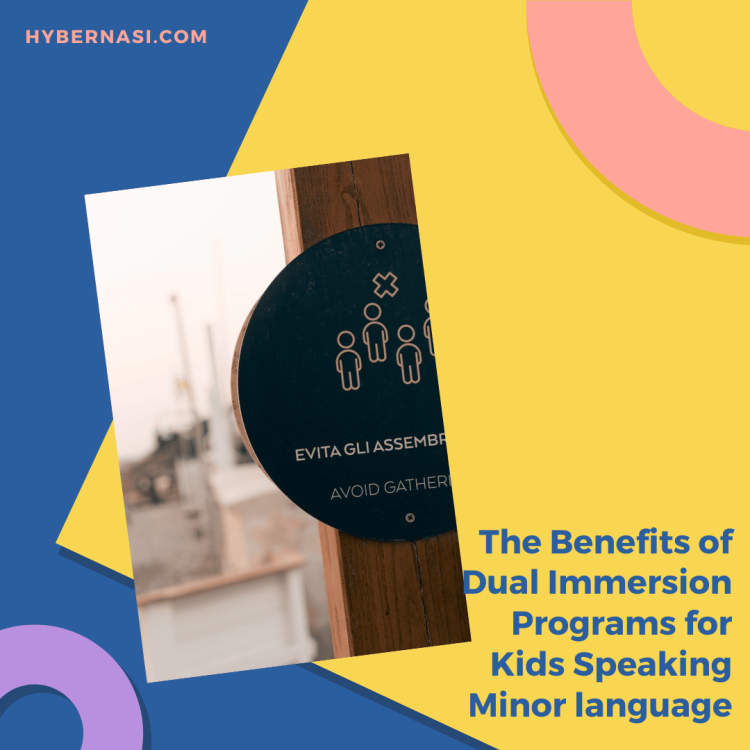Dual-language programs offer international students tremendous learning opportunities. They provide a chance to learn two languages, gain deeper insight into different cultures, and improve communication skills. This article will explore the many benefits of dual-language programs for international students.
Dual-language programs can help international students quickly gain proficiency in a new language. Students have the opportunity to learn a language from native speakers and use it both at home and abroad, giving them an advantage over those who don’t have access to dual-language programs. Dual-language programs can also help students better understand and appreciate different cultures, allowing them to make friends, communicate effectively, and be well-rounded, thoughtful citizens.
What Is a Dual Language Program?
A Dual Language Program (also known as a Two-Way Immersion Program) is an educational program in which English and another language such as Spanish, Chinese, or Arabic are used to provide instruction to language learners. This type of program prepares students to be bilingual, bi-literate and bicultural. The goal of dual language programs is to create a supportive environment that allows students to develop fluency and understanding in two languages.
Dual language programs typically feature the following components:
- Language instruction in both English and the target language
- A balanced approach to language instruction, which usually involves a mix of small and whole-group instruction, as well as peer- and self-directed activities
- An emphasis on fostering literacy skills in both languages
- Teaching materials and activities that are culturally relevant for both languages
Dual language programs can be implemented in a variety of settings, from preschool programs to middle and high school classes. Each program may have its own unique goals, curriculum, and language instruction methods.
The Benefits of Dual Language Programs for International Students

Dual language programs can be a great asset for international students. By providing the opportunity to learn two languages within the same school, these programs offer significant academic, social, and professional benefits.
Academic benefits include improved cognitive development, more advanced academic achievement, and improved literacy in both languages. Dual language programs also strengthen literacy and promote academic skills in English. With increased proficiency in both languages, international students can not only better communicate with native English speakers, but also gain a greater understanding of the cultural knowledge and perspectives associated with the language.
The social benefits can be just as important. International students can form relationships with native English speakers, as they will be able to communicate effectively with each other. They can also better connect with the local community, since they’ll have a better understanding of the beliefs and customs of the people surrounding them. This often leads to improved self-confidence and a greater sense of security.
Dual language programs can help international students gain a strong competitive advantage in the job market. Having established proficiency in both languages opens up numerous career opportunities, as proficient bilinguals are becoming increasingly sought-after in many professions.
In conclusion, dual language programs can provide international students with a wealth of benefits, from improved academic achievement to better job prospects. With dual language programs, international students can gain the skills they need to be successful in school, the workplace, and the community.
Choosing the Right Dual Language Program
Attending a dual language program in a foreign country is a great opportunity for international students to learn a new language and gain valuable cultural experience. With so many options available, it can be difficult to choose which program is right for you. Here are some factors to consider when choosing a dual language program.
Type of Program
Before selecting a language program, you need to decide which type of program is right for you. If you want to focus primarily on learning the language, you should look for a language program that offers courses in grammar, listening, and speaking. If you are more interested in learning about the culture, you should look for a program with plenty of cultural activities and excursions. Consider what type of program will meet your individual needs.
Location
The location of the language program can have a huge impact on your learning experience. Do you want to study in a large city like London or Berlin, or would you prefer to learn in a smaller city? Do you want to live with a host family or in student housing? Do you need to be close to a major airport for easy travel? Consider what type of environment is best for you and look for programs in those locations.
Costs
The cost of the language program can be a major factor in determining which program is right for you. Programs can vary significantly in cost, so make sure you understand what is included in the price. Consider the cost of tuition, housing, and meals. Also, be aware of any hidden costs such as books, excursions, and materials fees.
Program Structure
Before choosing a language program, it is important to understand the structure of the program. Determine the length of the program, how many hours of instruction are offered each day, and how you will be evaluated. Also, consider what type of support services are available and what activities are offered outside of the classroom.
Check Reviews
Finally, research the language program and check online reviews to get an idea of what other students think of it. Look for reviews from students who have attended the program in the past. These reviews can help you get an honest assessment of the program and determine if it is the right fit for you.
Choosing the right dual language program is a big decision, but with some research and careful consideration, you can find a program that fits your individual needs and goals. By understanding the type of program, the location, the cost, the structure, and program reviews, you can make an informed decision and have a successful and enjoyable experience.
Conclusion
Overall, dual-language programs represent an incredible opportunity for international students. Not only is it a great way to increase their language skills, but they have the potential to boost students’ professional success. Additionally, dual-language programs also provide students with a unique cultural experience, exposing them to a variety of educational and social opportunities. With these myriad benefits, dual-language programs are an attractive option for international students.
Ultimately, the rewards of dual-language programs make them a great choice for international students, regardless of their home country. These programs can give students the chance to expand their horizons, gain valuable language skills, and engage with different cultures. With such an exciting range of experiences to offer, dual-language programs offer an immersive and rewarding learning environment that will benefit students for years to come.




